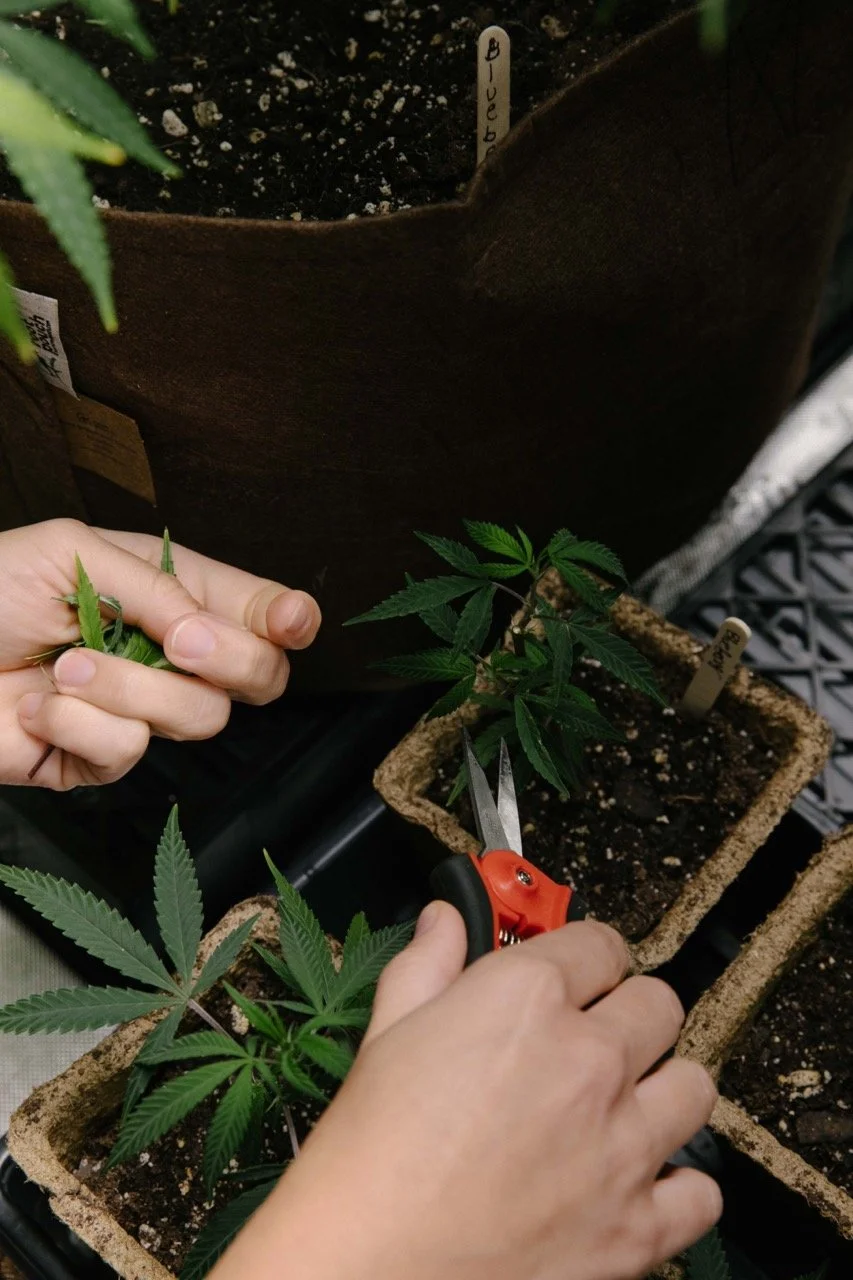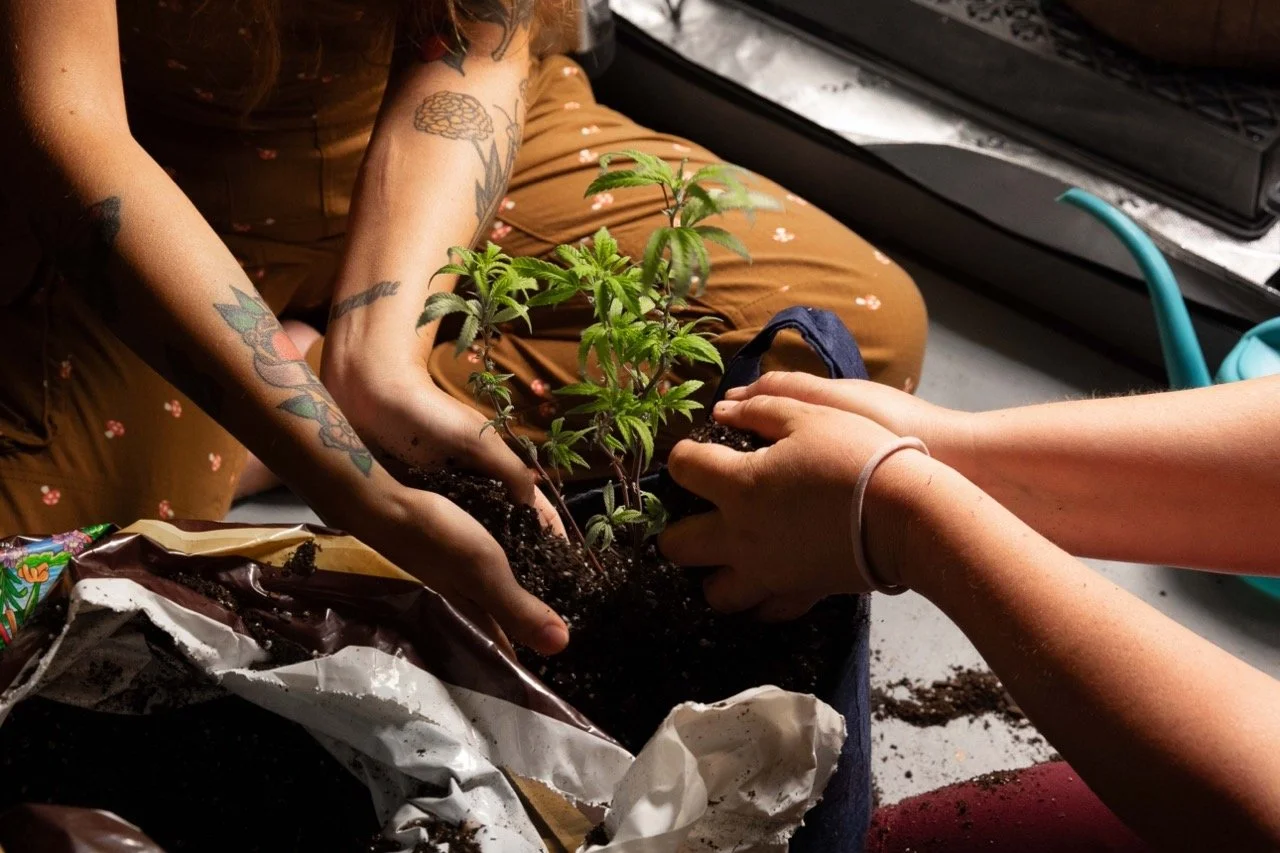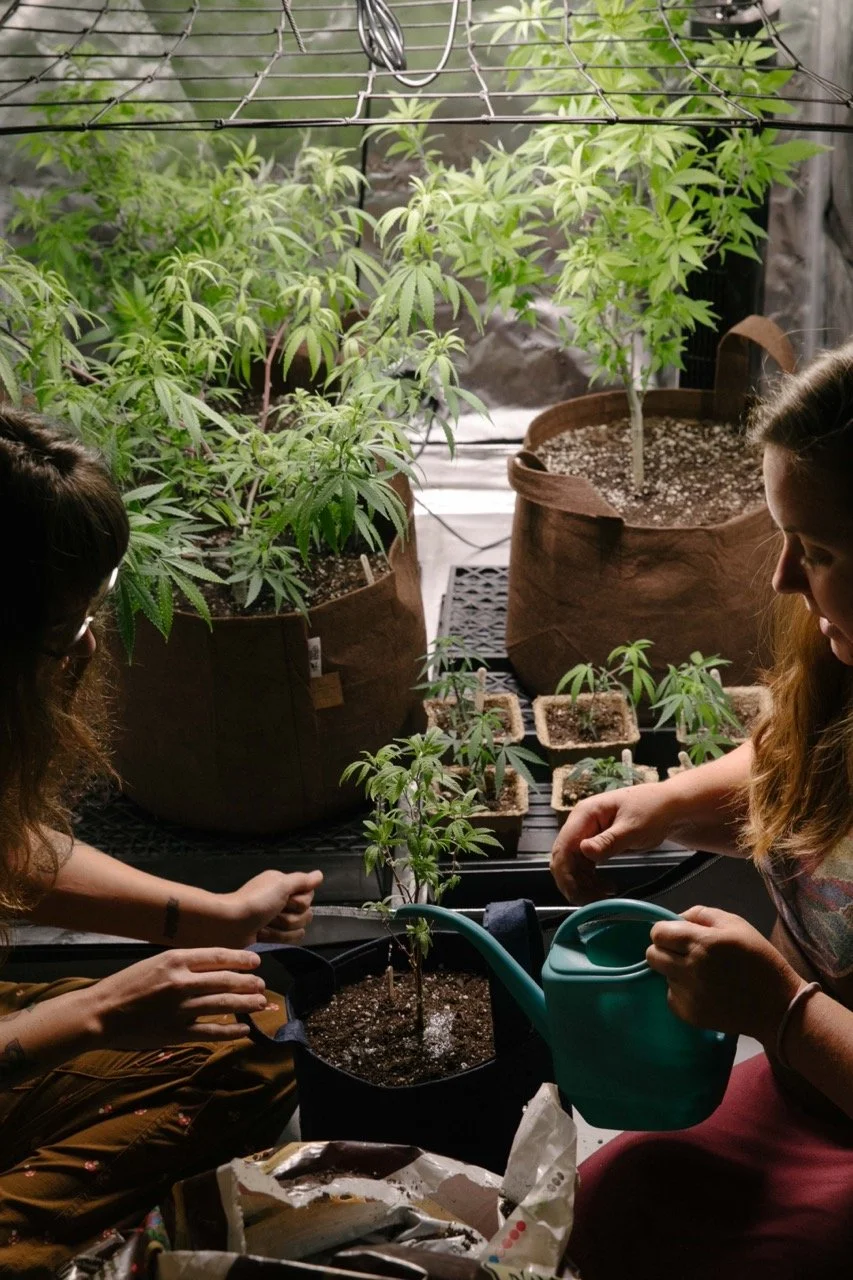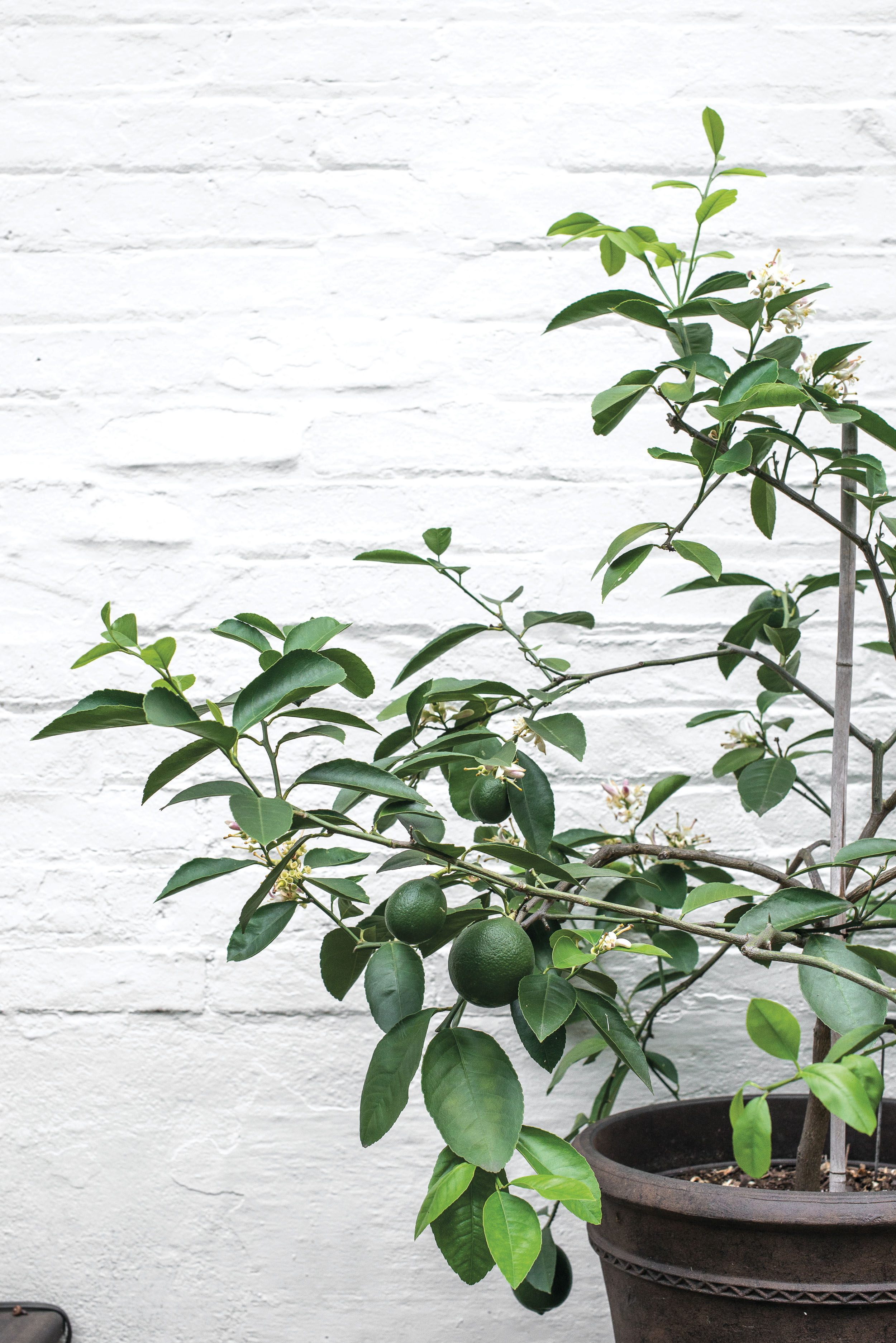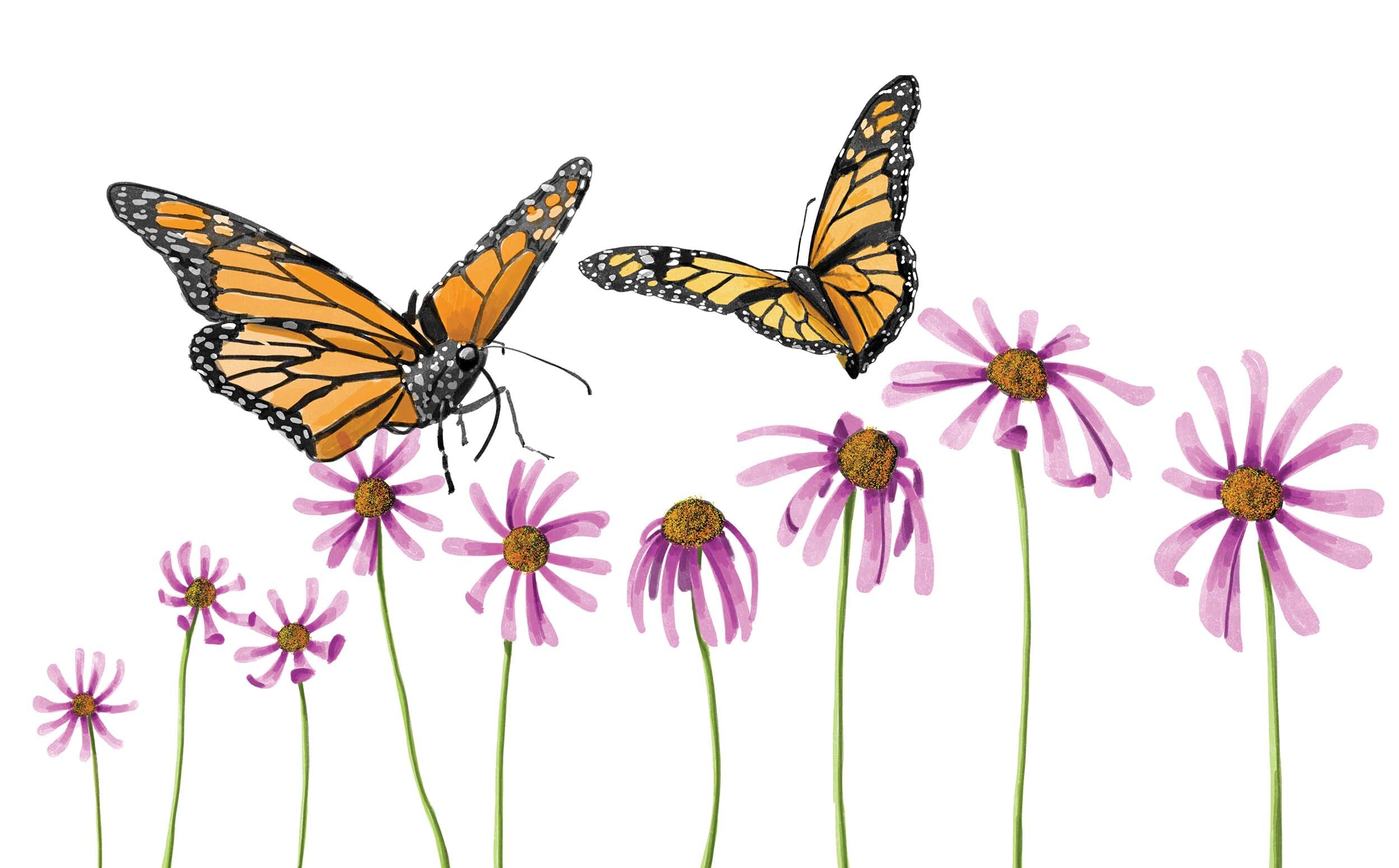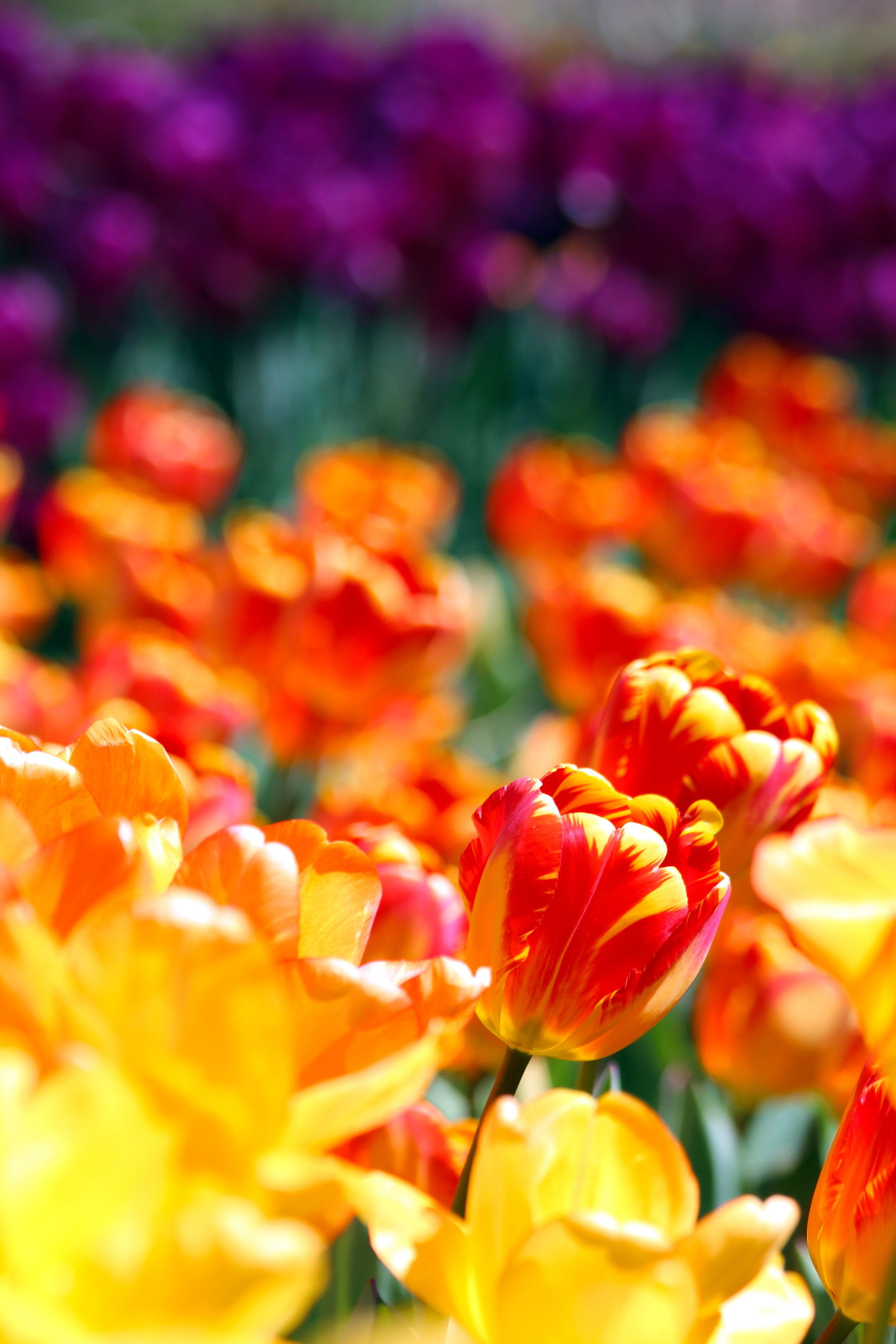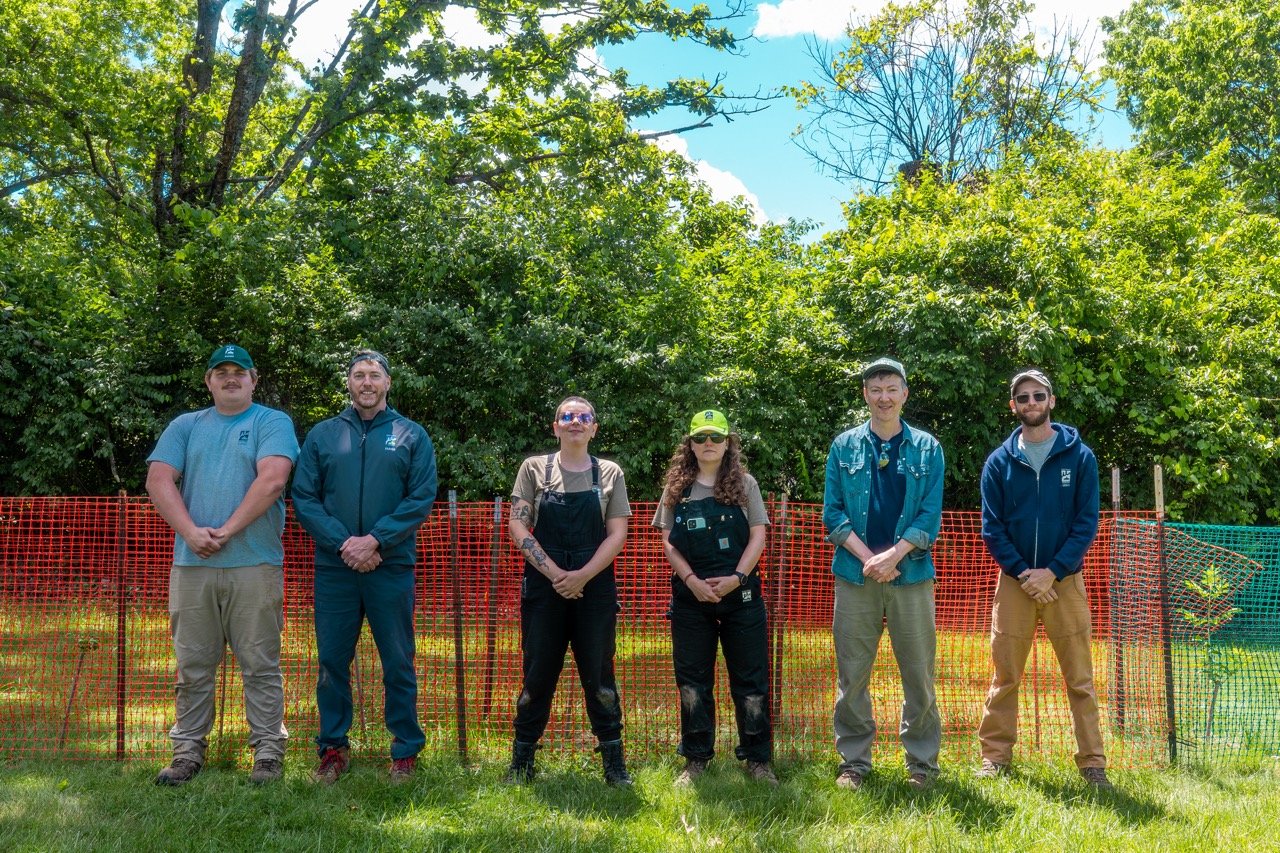Growing Weed
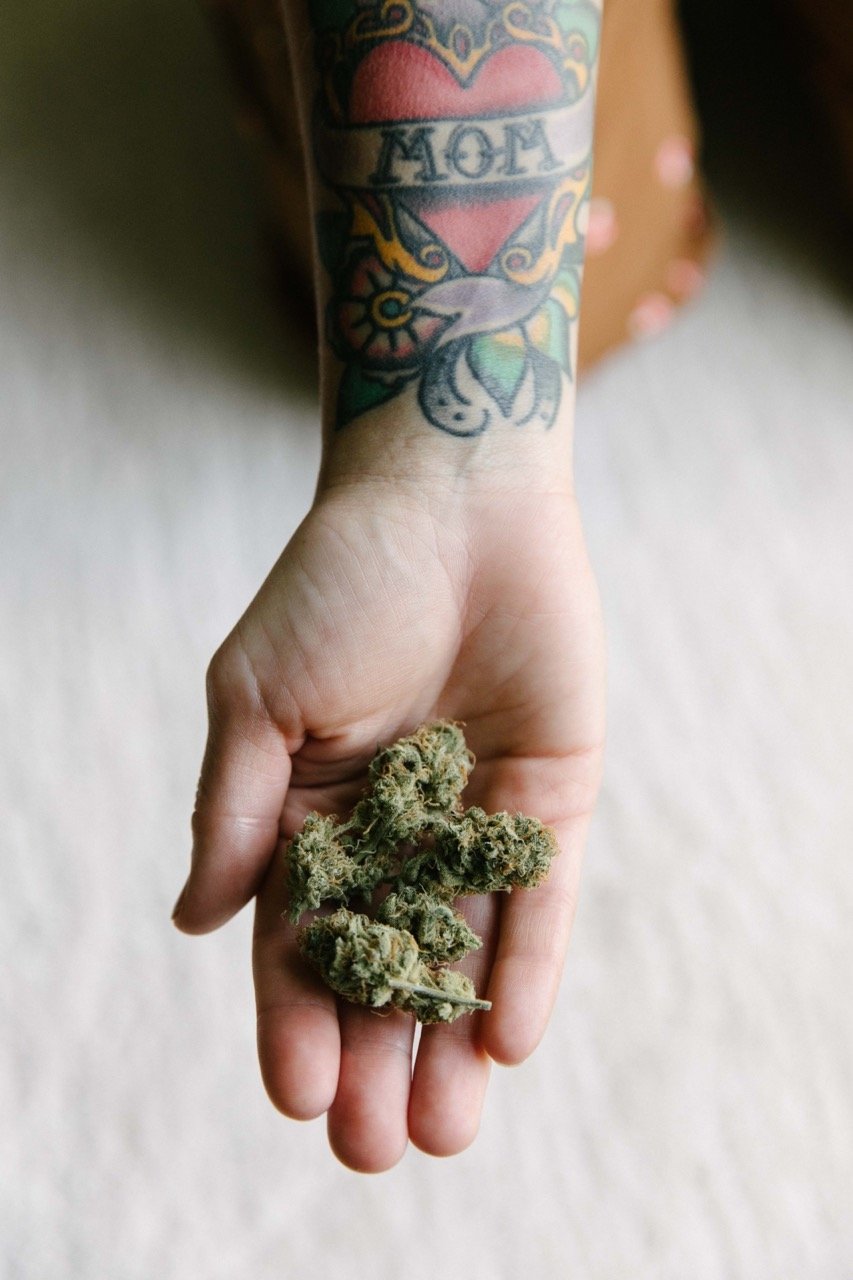
With the legalization of recreational marijuana in Ohio, home gardeners are giving this age-old plant a try.
photographs Madeleine Hordinski
Humans’ relationship with Cannabis goes back 12,000 years. We’ve used it for rope, textiles, medicine, religion, recreation, and more. Co-evolution and selective breeding have heightened the magic this flowering plant works on us, beguiling our nervous system in strange and often pleasant ways.
But its legal status has been up and down. Early European settlers to North America were required by law to grow hemp. By the early 20th century its use in pharmaceutical products was widespread. Then, driven by anti-Mexican xenophobia, marijuana was vilified as the root of “Reefer Madness” and outlawed nationwide by the 1970 Controlled Substances Act.
The passage of Issue 2 in the fall of 2023 made Ohio the 24th U.S. state to permit cannabis possession for non-medical use. While it’s taken time to hash out the finer points of adult-use recreational sales, Issue 2 immediately legalized home growing six to 12 cannabis plants per household.
With the change in the law, Civic Garden Center of Greater Cincinnati (CGC) Ecology Education Manager Mary Dudley was eager to try growing cannabis at home. The longtime gardening advocate, botanist, and first-time marijuana cultivator bought her seeds in December. With time and money invested, not wanting to make costly mistakes, she knew she needed to get in touch with people in the know. “And where do I get all my gardening information?” she asks. “The Civic Garden Center!” That led her to realize that the CGC needed to offer classes on growing cannabis, she says, “because it’s an equity issue.”
The equity issue is one seriously plus-sized elephant in the ever-expanding grow room of cannabis legalization and commercialization. For decades, millions of Americans, the vast majority of whom are low-income and non-white, have faced arrest and incarceration for possessing and selling a product that is suddenly a booming, legal market.
As many states legalize, Ohio included, frameworks are being set up to address this injustice, including record expungements and directing cannabis tax revenues and job creation to communities disproportionately affected by prohibition. But weed’s long-term black market status leaves an informational gulf for growers. Sure, there are print and digital resources available to the beginner, but this is one nuanced plant.
Above: Mary Dudley and Stephanie Fransen. Dudley grows cannabis indoors in an enclosed growing tent.
Growing the cannabis that works for you—and that varies widely based on the individual’s needs—takes a level of knowledge, observation, and experience some beginners can’t get from book learning. As with any crop, new growers learn from experienced growers. How do you build that connection? You offer classes and then, when those classes repeatedly sell out, you start a club. Which is exactly what’s happening at the CGC.
Dudley approached CGC Director Karen Kahle, who agreed that cannabis growing classes aligned with the horticultural nonprofit’s mission. So earlier this year, they began offering classes on growing, harvesting, and curing cannabis. They cost $15 (“the same as we would charge for a class about daylilies,” Dudley says) and have been a sell-out success. A close friend of mine attended two classes. The first covered germination through the vegetative phase of growing pot, and the second dove into cannabis’s flowering phase, as well as harvesting, drying, and curing. My friend was delighted by the diversity and enthusiasm of those in attendance, the high quality of the information shared, as well as a palpable sense of camaraderie in the sessions.
Cannabis as a Communal Enterprise
I visited CGC HQ and found Dudley and her colleagues behind picture windows looking out on the lushness of Hauck Botanical Gardens. On the meeting room table sat a demure, dioecious annual with familiar, seven-fingered fronds. Dioecious means individual plants are male or female, and sometimes hermaphroditic. This pot plant is a female clone. Dudley grew it from a cutting that included leaves and several nodes to encourage leaf and root production. It’s a strain named for head-shop owner, cannabis activist, and The Emperor Wears No Clothes author Jack Herer.
Cannabis is no delicate flower. Dudley demonstrates this by aggressively tousling, then bending, its upper stem in half, showing off the famous strength and flexibility that makes hemp a versatile and strong fiber. (Hemp refers to cannabis with a THC content below 0.3%. Higher than that, and you’re looking at marijuana.)
“I’ve got a couple of these at home and I’m going to keep one in the vegetative state so I can continually clone it,” Dudley says. “I spent $15 on a seed and now I have half a dozen plants that I can share with people.” Like most strains of cannabis, this plant can be prevented from flowering by keeping its light cycle set to 18/6 or above, she says, meaning: 18 hours of light, 6 hours of darkness, simulating summer. “12 and 12 signal that the season is ending, and then it starts flowering.”
Dudley is flanked by CGC Homegrown Cannabis class co-facilitators Stephanie Fransen, who is the CGC’s Administrative and Facilities Manager, and Justinian Mason, who has worked in the cannabis industry, and authored a guide: Kushtinian’s Home Cultivation Handbook: An Easy to Follow Guide to Growing Your Own Cannabis. We’re soon joined by Todd Buell, an experienced home grower who took the class and is now interested in starting a Homegrown Cannabis club at the CGC.
The majority of enrollees are new to growing this plant, Dudley says, but the classes have also attracted several like Buell, who, after years on the fringe, want to meet up and share tips, techniques, and more.
Why Grow at Home?
Why, you might be forgiven for asking, invest time and money in growing a plant that has just become commercially available to Ohio adults?
“For me, I like knowing that what I’m consuming is top-tier,” says Fransen, a medical marijuana card holder. “And that it’s safe, that it doesn’t have anything in it.” While the state tests dispensary-sold cannabis, it’s not as regulated as she would like. It’s not uncommon for commercial cannabis to contain pesticides. And she likes having control over her supply, she says, because “plants in general are medicine for me, not just cannabis. There’s a wide range of options of things we can use medicinally and it’s really important to me to know they’re safe.” Like most experienced home growers, Fransen likes being hands-on with the growing as well as the harvesting and processing stages, all of which let growers tailor their harvest according to their preferences.
Cannabis autonomy is echoed by veteran home grower and CGC cannabis class participant Adam. (He asked that we keep things on a first-name basis because, he says, he’s noticed recently that legal rights we take for granted aren’t necessarily immune to reversal. That, and employers are still within their rights to make employment contingent on a drug screen.) Like Fransen, Adam wants to know his pot is unadulterated. He only grows organically, sans synthetic fertilizers, in soil (as opposed to hydroponically), from regular seeds (more on that later). Currently, Adam says, there’s no such thing as USDA-certified organic weed because, while the federal government is moving to declassify cannabis as a Schedule I controlled substance, its current status makes it ineligible for USDA organic certification.
The Right Plant with the Right Traits
There are three main types in the genus Cannabis. These are the enlivening, mood-heightening Cannabis sativa; the more relaxing, body-buzzing, painkilling C. indica; and the low-in-THC, rich-in-CBD C. ruderalis. CBD (cannabidiol) doesn’t get users high but is anti-anxiety, anti-inflammatory, and antioxidant, boasting a spectrum of beneficial properties that, in tandem with THC (the psychoactive ingredient Delta-9 tetrahydrocannabinol), is heightened through the so-called “entourage effect.” The vast galaxy of modern cannabis hybrids combine traits from these three types, which contain, to varying degrees, between 80 and 100 cannabinoids. Science is only beginning to fully understand the effects of these compounds on our endocannabinoid system, which make them therapeutically and medicinally useful.
You can consume these compounds through salves, balms, tinctures, butter, oil, and other lipids. You can bake with it and, obviously, smoke it. With just as many approaches to growing it, Fransen says, part of the value of building a local cannabis home growing community is that it allows her to see the many other ways people are growing and using it, trading tips, cautions, and even recipes.
Home growing cannabis inevitably leads to broader horticultural and ecological interests, she says. “This plant has so much to offer and teach continuously, and you can never learn too much about gardening in general.”
Cannabis is a plant that rewards time spent in close observation and care. That’s because the durations of its growth and harvesting phases shape the aesthetic experience and psychotropic profile of the final harvest. Over time, specific cannabinoids develop, as well as terpenes, the aromatic chemicals that influence the buds’ flavor and smell. While they don’t get you high, terpenes have psychoactive and pain-relieving properties of their own. In a commercial setting, market forces reward a shorter crop turnaround. As in viticulture and winemaking, nuance, subtlety, and attention to detail make all the difference.
Mason, a Cincinnati native and college athlete, started using cannabis after a concussion on the football field left him with trouble sleeping. When California and other states began to legalize, he says, “I moved to L.A. specifically to try to get into the cannabis industry.” Mason found work in the HR/recruiting sector of the business and continues to do consulting work.
“When Covid hit, I really dove deep into growing,” he says. “I was pretty much locked in my apartment, just growing plants and taking notes, documenting everything.” The book he wrote is deliberately short, he says, “because I saw how relatively simple it is, especially if you know how to grow other plants. My main mission is to make home growing more accessible.”
Mason believes that legalization and the growth of a cannabis industry are positive developments. “Part of the issue some people have is that there are all these people who have been growing for generations, for decades, and for the most part, they’re unfortunately getting left out,” Mason says. “That’s part of the community we’re trying to cultivate.”
Cultivating Heirloom Varieties
With so many options and hybrids out there, I’m curious what Mason suggests a new grower might try. “Go with your favorite stuff,” he suggests, “because you don’t see a lot of varieties in the dispensaries anymore, simply because they phase products out.” While the industry innovates, the homegrown cannabis community carries a social seed bank, a genetic reserve preceding commercialization. That bank includes regionally specific varieties, called “landrace” strains, with long histories.
Communities of traditional farmers cultivated regionally specific types of cannabis with open-pollinated plants, selecting seeds from those that showed desirable traits. Such strains emerged in Afghanistan, Colombia, Jamaica, Mexico, and Thailand. Rampant hybridization erodes the availability of these regional types, which are often pure indicas or sativas. Such “pure” archetypes allow the user to discern between divergent qualities (again, very generally speaking, indicas are more relaxing, sativas more mentally stimulating). Modern hybrids combine indica and sativa traits in varying ratios.
But this is bigger than achieving one’s desired buzz or therapy. As Robert C. Clarke and Mojave Richmond write in Cannabis Business Times, “the true tragedy is not just the loss of unique landraces, but also the erosion of the traditional farming cultures that created these landraces. We owe it to those who collectively selected these amazing and diverse landraces to protect and multiply those that remain and allow them to once again see the light of day.”
Belonging to a community like this is one of many ways to honor past growers and to maintain and support the continuity of the plants you love and use. The CGC’s foray into cannabis classes has bloomed into making them a point of contact for both first-time and legacy home growers, a place to share information and even material. Operative word: share. Because—disclaimer—the Civic Garden Center will not be getting into the retail business, Dudley says. The CGC will not be selling seeds or weed. That said, if home growers want to trade non-psychoactive plant material, including seeds and cuttings, that’s their business.
Growers interested in high-grade cannabis almost always do so indoors, in grow tents, closets, or rooms that provide a high degree of control over environmental conditions and lighting. They’re usually only interested in unfertilized female plants, because seed production diverts the plant’s energy away from producing cannabinoids. With legalization, some, including legacy growers, are trying their hand at outdoor cultivation. That’s all good, but Dudley and friends would like everyone to know that if you choose to grow outdoors, please, please, please eliminate male plants once their sex becomes apparent, lest the breeze turn your neighbor’s patch into schwag. (That’s low-quality weed.) And while many growers maintain a line of female clones like Dudley does, others use seeds created through chemical processes that guarantee flowering plants. That’s more efficient than rolling the dice, but long-term, using regular seeds is important because, as Mason writes in his book, “in a market flooded by hybrid plants, growing from seeds can help retain key genetics to pass down to offspring via breeding.” As with open-pollinated heirloom veggies, that open pool of genes allows future plants to respond to environmental changes and stresses.
Mason and Buell see legacy and home growers’ relationship with Big Weed as a boon, the way craft brewing has kept the beer industry diverse (an appropriate analogy, given that cannabis and hops share a genetic lineage). Micro- and home brewers reinvigorated the beer market so that today, you can pick up a six pack brewed by Big Bev “or you can go to Joe up the street who brews in his bathtub, and you trust Joe’s methods,” Buell says. “And it might be the best stuff,” says Mason. “Hopefully it gets to a point where we have the different tiers.”
Beyond all that, there’s the simple pride and satisfaction of growing for yourself, of playing a long game, of reaping the rewards of care and close attention to another living thing. Adam has learned to read his plants’ leaves, he says, and suggests others do the same, considering needs beyond the nitrogen/phosphorus/potassium values of their growing medium and attending to the magnesium, calcium, and sulfur content as well.
Adam still grows from regular seeds, he says. Sometimes, when he discovers a male plant, “I’ll pop it in a grow tent with a female, and presto,” he says, “I have a fridge downstairs full of thousands of seeds.” These he hopes to share with fellow members of the CGC’s homegrown cannabis community.
“The logic being that the more people who grow and use cannabis, the more difficult it will be to reverse the law,” he says. So, like savers and sharers of all seeds, there’s a political element to this act, pushing back against profit-motivated systems of control while preserving and sharing the seeds on which all of humanity’s health and resilience relies.
So why not, if you find yourself so inclined, give home growing cannabis a try?
The CGC’s classes, Buell says, give you “everything you need to go from not having seen the plant before, to, okay, I can grow this, to I can harvest and actually produce some of my own medicine.”
“At the end of the day,” Dudley says, “CGC is going to give you all of the information that we have. We’re not gatekeeping any of this. But we also don’t want to overwhelm people and turn them off. You could literally get a seed and stick it wherever and just have fun. Just like you can grow tomatoes however you want.
“So don’t let perfect get in the way of progress,” she says. “Just give it a go.”
Jordan Aversman and Jennifer De Marco of Fab Ferments grow tall and luscious cannabis in a secluded area. With Aversman’s background in horticulture and De Marco’s advocacy of medicinal plants, they share a passion to grow and cultivate heritage varieties of cannabis and increase public appreciation of the maligned plant.
Ohio Revised Code Title 37, Section 3780.29 | Home grow.
Cultivation or growing of adult use cannabis only takes place within a secured closet, room, greenhouse, or other enclosed area in or on the grounds of the residence that prevents access by individuals less than twenty-one years of age, and which is not visible by normal unaided vision from a public space.
Ever since his grandfather put him to work squashing potato bugs and shoveling compost in a vast organic garden north of Philadelphia, Cedric has loved the outdoors. These days, he squashes bugs for his green-thumbed partner, Jen. His writing has appeared in Saveur, Cincinnati, This Old House, and Belt magazines. He is the Collector at the Mercantile Library Downtown.

